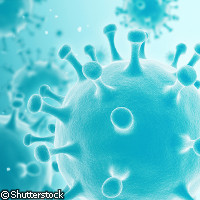Researchers follow spread of HIV between cells
A team of German researchers has successfully tracked a key protein in the HIV (human immuno-deficiency virus) intercellular infection and virus assembly process in real time. Their partly EU-funded research now published in the open-access journal Public Library of Science (PLoS) Pathogens has improved our understanding of the Gag (group-specific antigen) protein's infectious route from cell to cell, and might lead to new treatments. The study was in part funded in the framework of the HIV ACE ('Targeting assembly of infectious HIV particles') project. HIV ACE receives support from the EU under the Health Theme of the Seventh Framework Programme (FP7). In order to follow the protein, the researchers from Ludwig-Maximilians-Universität München and the University of Heidelberg cultured cells containing eight HIV-1 genes. One of those genes had been manipulated in such a way that it produced a fluorescent form of the Gag protein. The Gag protein provides structural elements of HIV. For instance, when HIV RNA (genetic material) is shipped from an infected cell to the next susceptible cell, the membrane in which the RNA is wrapped is constructed from the Gag protein. Gag is also highly versatile, as it can bind to the inner face of the cell membrane as well as viral RNA and cellular proteins, and Gag can even form virus-like particles in the absence of other viral proteins. 'Using a 'photoconvertible' version of the famous green fluorescent protein - whose discovery and utilisation in biological systems were honoured with the Nobel Prize in chemistry in 2008 - attached to the Gag protein, we were able to convert the colour of membrane-bound Gag proteins from green to red,' says Professor Don Lamb, head of the research group at Ludwig-Maximilians-Universität München. Thanks to specially adapted microscopic techniques, the researchers were thus able to determine that - from initiation of virus assembly to its release - it takes about 25 minutes to produce an HIV virus. They also found that virus particle production happened completely asynchronously all over the culture, and after their assembly, viruses were released from individual assembly sites and not from preformed budding platforms. Such reusable assembly platforms are assumed to exist for other viruses. The new findings 'add essential dynamic information to our picture of virus release and provide an experimental basis for interfering with this stage of virus replication', the paper reads. Ultimately, they could help find ways to interrupt intercellular viral spread.
Countries
Germany



